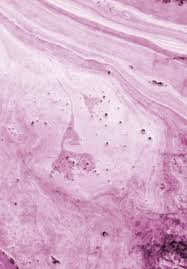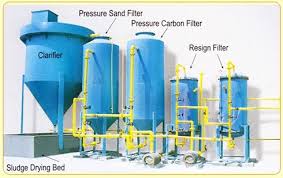Toxicological Significance of Pesticide Metabolism Studies n Animals
Many studies have been conducted to establish conditions for pesticide use, which will permit the pest control essential for food production and yet insure safety to humans. It is clear that animal metabolism studies assume in the overall evaluation program that each has essential toxicological significance.
Without knowledge of the metabolic pathways taken by the pesticide in laboratory animals, oral toxicity testing may not be complete, as it may be difficult to test all the appropriate toxicants.
Further, if the metabolic fate of pesticide residues present in the diet of food animals was not known, it would not be possible either to evaluate the toxicity or to quantify the amounts of pesticide residues occurring in animal tissues or products destined for human consumption.
The toxicological significance of pesticide metabolism studies in both large and small animals is thus clear for the overall evaluation of safety to humans associated with the use of agricultural pesticides.
Techniques and procedures used to study the metabolism of pesticides in animals
The experimental equipment, procedures and techniques that may be used to study the metabolism of pesticides in large animals (chickens, sheep, goats, swine, cattle, and horses) include:
(1) Techniques for administration of pesticides to animals;
(2) Metabolism stalls and cages for restraining experimental animals;
(3) Methods and equipment for separate and quantitative collection of excreta, respiratory gases and other volatile products from animals;
(4) Surgical techniques used to modify animals for metabolic studies (colostomy, cannul at ions, fistulations, etc.);
(5) Biopsy techniques; and
(6) In vitro techniques that may be useful for studying the metabolism of pesticides in large animals.
Pesticide Biotrans Formation in Animals
Pesticide biotransformation is the process by which lipophilic foreign compounds are metabolized through enzymatic catalysis to hydrophilic metabolites that are eliminated directly or after conjugation with endogenous cofactors via renal or biliary excretion. These metabolic enzymes are divided into four groups, Phase I, II, III and IV reactions (Oeschetal.2000).
Read Also : Factors Influencing Pesticide Degradation in Soils
Phase I Metabolism
Phase I reactions, considered as functionalization reactions, add or uncover functional groups on pesticides with increasing polarity or nucleophilicity that create a suitable substrate for Phase II metabolism.
Phase I reactions generally involve oxidation, reduction and hydrolytic reactions as well as other rarer miscellaneous reactions. Primarily the cytochrome P450 family of enzymes mediates these reactions, but other enzymes (e.g. Flavin monooxygenases, peroxidases, amine oxidases, dehydrogenases, xanthine oxidases) also catalyze the oxidation of certain functional groups.
In addition to the oxidative reactions, there are different types of hydrolytic reactions catalyzed by enzymes like carboxylesterases and epoxide hydrolases (Hodgson & Goldstein 2001, Parkinson 2001).
Phase I products are not usually eliminated rapidly, but undergo a subsequent reaction in which an endogenous substrate such as glucuronic acid, sulfuric acid, acetic acid, or an amino acid combines with the newly established functional group to form a highly polar conjugate to make them more easily excreted.
Sulfation, glucuronidation and glutathione conjugation are the most prevalent classes of phase II metabolism, which may occur directly on the parent compounds that contain appropriate structural motifs, or, as is usually the case, on functional groups added or exposed by Phase I oxidation (Zamek-Gliszczynskietal.2006).
Oxidation
Oxidation reactions are arguably the most important metabolic reactions and are found in both plants and animals. Although the enzymology of oxidative reactions is beyond the scope of this present chapter, it is evident that oxidation can be mediated by a range of enzymes, e.g. cytochrome P450s and peroxidases.
The former enzyme has been widely researched and shown to consist of a wide range of different isoforms, the relative proportions and types present being dependent on the species, e.g. chlortoluron undergoes benzylic oxidation in maize and N– demethylation in wheat.
Oxidation is also an important mechanism in the de-activation and metabolic selectivity of the sulfonylurea herbicides.
Hydrolysis
Hydrolysis reactions are limited by the chemistry and so appear to be less common than oxidative processes. They nevertheless have significant importance in the detoxification of many pesticides and can be both chemical- or enzyme-mediated.
Ester hydrolysis is particularly important in the case of the arylphenoxypropionic acid herbicides, e.g. fluazifop and fenoxaprop, where the herbicide is formulated and used as the alkyl ester to facilitate foliar absorption.
Once in the plant, the ester is rapidly hydrolysed to the free acid, which is the active moiety. Ester hydrolysis is also a key metabolic step in the detoxification of the pyrethroid insecticides. Esterase activity is particularly important in the toxicity of the phosphorothionate insecticides.
In an invitrostudy investigating the relative toxicity of diazinon to mammalian and avian species, it was demonstrated that the oxon metabolites (active moieties) were generated in the liver at essentially an equivalent level.
However, studies investigating the stability of the oxon in blood showed that mammalian blood (cow, sheep, pig and rat) readily hydrolysed the ester, whereas avian blood had virtually no hydrolytic activity.
This finding is consistent with the observed toxicity which shows that avian species are highly susceptible to diazinon toxicity.
It was therefore concluded that the extrahepatic metabolism of diazinon is more toxicologically important than liver metabolism. These data also demonstrate that esterases in the blood are important metabolically and are species-dependent.
Hydrolysis reactions resulting in the opening of heterocyclic ring systems have also been reported, e.g. cleavage of the oxazolidone ring in vinclozolin, and the heterocyclic ring in some of the sulfonylurea herbicides.
In the poultry metabolism of the fungicide vinclozolin, the major component of the residue in fat, liver and muscle resulted from the hydrolytic cleavage of the oxazolidone ring.
Other dicarboximide fungicides, e.g. procymidone and chlozolinate, also readily undergo opening of the heterocyclic ring by hydrolysis, a mechanism for which is described by Villedieu etal. (1994).
In the case of the sulfonylurea herbicides containing triazine or pyrimidine as the heterocyclic ring, mechanisms for the hydrolytic ring cleavage have been proposed.
In the cases of chlorsulfuron and prosulfuron, the product of the opening of the triazine ring is a triuret, while the pyrimidine ring of bensulfuron-methyl and halosulfuron- methyl hydrolyses to give a guanidine, the classic example of amidase activity is propanil, a rice herbicide, which is rapidly metabolized in rice and animals to dichloroaniline.
Reductive Processes
Reduction reactions have been reported in all biological systems. It is probable that these reactions are more common, but the reaction products may be subsequently re-oxidized within other compartments of the biological system.
Typical reactions include the reduction of nitro groups, aldehydes, ketones and alkenes. In animals, the reactions are characteristically found in the liver and GIT and would be expected to occur in ruminants.
Phase II Metabolism
Phase II or conjugation reactions represent chemical synthesis where the xenobiotic (exocon) is chemically bonded to an endogenous substrate (endocon).
Glutathione
Glutathione (GSH) is a tripeptide found in both plants and animals and is important as a source of endogenous thiols, which act as scavengers of free radicals and active electrophiles. The reaction results from nucleophilic attack of the thiolate anion on an electrophilic centre and is catalysed by the enzyme, glutathione-Stransferase.
Read Also : Roles of Producers and Corporations in Waste Management
In animals, the formation of mercapturates facilitates the elimination of the xenobiotic in the urine. The transport of the conjugates between cells and to various organs is complex and has been described as involving the formation of the glutathione conjugate inside the cell which is then released for conversion to the S-cysteine conjugate.
This must then be reabsorbed into the cell to be N-acetylated, and finally the mercapturate is released from the cell and excreted.
Sugar Conjugates
Conjugation of xenobiotic chemicals with endogenous sugar units is common in both plants and animals and is most frequently observed with alcohols, amines, mercapto moieties and carboxylic acids.
In plants, sugar conjugates are usually in the form of glucosides and in animals as glucuronides, although there are exceptions, e.g. glucuronic acid conjugates of 4-nonylphenol found from wheat suspension cultures and the use of glucose conjugates in mammals to conjugate endogenous steroids and bilirubin (Bounds and Hutson, 2000).
In animals, glucuronic acid is an important conjugation partner for foreign and endogenous substances in preparation for excretion, especially phenols and acids which are frequently excreted in urine as glucuronides.
An additional complexity of glucuronide conjugation was described by Sidelmannet al. (1995) who showed that glucuronide conjugates of 4- fluorobenzoic acid could exist as isomers through internal acyl migration and rotation. The glucuronides rearrange to the 2-, 3- and 4- acyl derivatives, each of which exists in α– and β-forms.
Amino Acid Conjugation
Amino acid conjugation has been observed in all species; the nature of the amino acid used in the conjugations appears to be dependent on the nature of the acid rather than on the species (Bounds and Hutson, 2000).
One of the best known examples of amino acid conjugation is the reaction of 1,2,4-triazole with serine to give triazolylalanine.
It has been generally accepted that triazolylalanine is a unique plant metabolite and can also be detected in rotational crops (e.g. fenbuconazole) but recent reports have shown that it is also found in the goat and hen following dosing with fenbuconazole.
Following feeding at 100 mg/kg in the diet, the metabolite was identified in liver, milk, kidney and muscle of the goat and in hen muscle. Triazolylalaninewas not found in the rat following dosing with fenbuconazole.
Lipophilic Conjugation
Some conjugation reactions increase the lipophilicity of the xenobiotic with the implication that it will be retained within the system and not be as readily eliminated. Some of the best known examples of these conjugates are found in the metabolism of the pyrethroid insecticides.
The metabolism of the miticidecycloprate in the cow resulted in 52–76% of the radio-label becoming associated with triacylglycerols in the milk.
These were identified as comprising a mixture of cyclopropyl fatty acids resulting from the metabolism of cycloprate to cyclopropanecarboxylicacid (CPCA) and subsequent chain elongation of the carboxylic acid group in a similar manner to that found in fatty acid biosynthesis.
It was particularly interesting that a CPCA conjugate of carnitine was present in milk at a level of 39% of the totalradioactive residue in milk 12 h after dosing. The significance of this finding is related to the entry of fatty acids into the mitochondria where fatty acid synthesis and oxidation take place.
In this instance, the carnitine acts as a carrier facilitating the transfer of CPCA across the membrane. Based on the above findings it is likely that other xenobiotic carboxylic acids can be incorporated into triglycerides and can be expected to be present in high-fat commodities such as milk.
Sulfate Conjugates
Sulfate conjugates are commonly observed in animals, and are formed from substrates similar to those, which readily form sugar conjugates. Indeed, in many cases, these conjugates are competitive with glucuronidation and it has been shown that sulfate conjugation can be promoted by administration of sulfate precursors, e.g. cysteine.
The formation of sulfate conjugates is proposed as being an enzyme- catalysed transfer of sulfate from 3-phosphoadenosine-5-phosphosulfate to the substrate and has been widely reported for phenolic xenobiotics.
Phase III Metabolism
Phase III metabolism refers to pesticide residues that are associated with endogenous materials; they can be either covalently bound, or in some way physically encapsulated within the macromolecular matrix.
The significance of these residues is difficult to assess and requires that they are characterized in terms of bioavailability and differentiated from the natural incorporation of the radio-atom.
In animals, the most common endogenous materials to which xenobiotics are bound are protein or nucleic acids. In the case of the triazine herbicide ametryn, 61 and 79% of the liver residue in goat and hen, respectively, were unextracted, but following protease hydrolysis could be solubilized.
After a further hydrolysis using conditions typical of those used to degrade proteins, several metabolites containing the intact triazine ring were released. The study concluded that conjugations with protein represented a major pathway in the biotransformationpathway of ametryn.
Phase IV Metabolism
A phase IV residue is essentially an artefact of the metabolism study and results from the incorporation of the radio-label into natural compounds. This incorporation is obviously dependent on the positioning of the radio-label but usually results from the extensive metabolism of the xenobiotic.
The products can be widely distributed throughout the biological system and result in a significant challenge for the metabolism chemist. In the metabolism of chlorethoxyfos in the goat, total degradation of the xenobiotic was evident with the formation, and expiration, of 14CO2.



